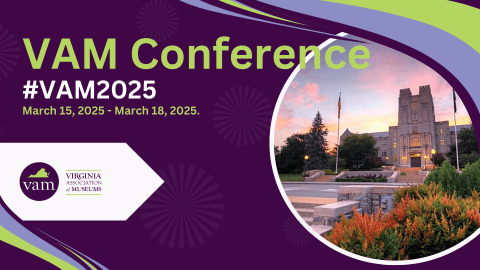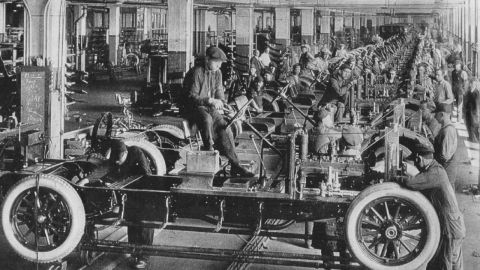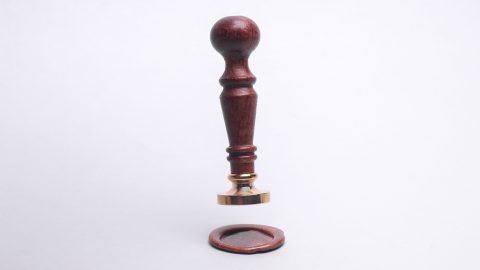This Discussion Guide is designed to prompt museum administrators, boards, and practitioners to explore and learn from the innovative creative aging programs featured in this issue. Use the guide to host a conversation with colleagues in your institution or more deeply explore the issue’s content on your own.
Older Adults in Your Community
Marjorie Schwarzer writes that “Museums should combat ageism by incorporating anti-ageist awareness within current diversity, equity, accessibility, and inclusion (DEAI) initiatives.”
- What are the demographics of your organization?
- How might you incorporate institutional training on implicit ageism and its impact on program design and delivery into your DEAI work?
- Can you undertake an audit of your institution to identify instances of ageist language and behavior?
Lifetime Arts Co-founder and CEO Maura O’Malley points to “program providers in the arts, health, aging, veterans, and parks and recreation sectors…[that] have the potential to collectively impact the quality of older adults’ lives in America” as well as “multiple federal, state, and local agencies” interested in researching and funding services that respond to needs of older adults.
- What relationships do you currently have with health organizations, senior homes, and community centers that can offer insights about older adults?
- What other organizations and institutions in your area serve older adults? What can you learn from their programs?
- What kinds of programming are missing in your area?
Creative Aging Program Planning
Sara Lowenburg describes the diverse programming rooted in local history and culture at multiple sites run by the Louisiana State Museum. One participant remarked that “landmarks I’ve known my whole life have never felt so alive and vibrant. I now see, feel, and appreciate them with much greater depth.”
- How might your resources spark joy and awaken new appreciations?
- What can you learn from the curiosity and stories that older adults have about your institution?
- What collections objects/exhibitions/gallery spaces do people remember and why?
Both the Louisiana State Museum and the Anchorage Museum’s creative aging programs intentionally incorporate the wisdom of elders and culture bearers. These teachers provide multiple perspectives and ways of looking at collection objects and traditional artistic techniques.
- How can new audiences, especially those engaged in arts learning, make new connections to your collections?
- What new information about collection objects will the museum gain by inviting new observations, perspectives, and knowledge from different stakeholders, especially culture bearers?
In a region filled with arts providers, Britt Patterson-Weber describes how Naples Botanical Garden created a program that is not intimidating to art beginners and is filled with plant-centric social activities that put people at ease, build community, and support individual confidence.
- What assets—collections, natural and built environment, archives—in your museum offer inspiration for arts learning, creativity, and social interactions?
- What best practices do you employ in other education programs that can be adapted to meet the intellectual and social needs of older adult learners?
For the “Stay Gold” program at the Museum of Contemporary Art Tucson, Eli Burke recounts how LGBTQIA+ youth and older adults were invited to together “create and consume contemporary art to make relevant connections between museum exhibitions and their lives.”
- Are there particular communities in your area that do not have natural opportunities for more intergenerational dialogue?
- Who needs to be part of the facilitation team to reach out to these groups, plan, and ensure that individual participants feel safe?
- How will you provide members of the facilitation team the access and support they need to explore your museum’s resources with a focus on the interests of this constituency?
Shifting to Virtual Programs
The creative aging programs featured in this issue were planned as in-person programs, but most shifted to virtual programming during the pandemic, learning as they went about how to maintain the integrity of the program, adjust schedules and time frames, and take advantage of new online tools for teaching and building community.
- Are there particular community groups that could benefit from virtual creative aging programs, especially due to geographic distance, transportation considerations, or other issues?
- What additional strategies are necessary to ensure community building and connections in the virtual space?
- Who will be left out of the programs due to lack of access to technology and/or lack of digital literacy? Are there ways that the museum can help to advocate for improvement to the digital infrastructure and literacy?
Online platforms allowed for new types of collaboration and exploration of new teaching tools, and cross-
departmental collaboration among education, IT, collections, marketing staff, and volunteers brought new energy and possibilities into the programs.
- How accessible and adaptable are your institution’s online learning platforms for use in art teaching? Do your teaching artists have other suggestions?
- What internal staff partnerships are necessary to plan and implement successful online programming?
- How up-to-date is your technology and digital infrastructure? What funding opportunities might these creative aging programs unlock for needed upgrades?
- How much time is needed to design and implement online teaching and learning programs?
Building Long-Term Relationships
Molissa Udevitz at the Anchorage Museum discusses her institution’s work to engage older adults who are not currently being served by the museum.
As you design your outreach, are you looking to support people who share similar experiences? Or do you hope to create opportunities for dialogue and exchange across people with different experiences?
- What organizations can you work with to co-create museum-based creative aging programs that address the interests, availability, and curiosity of their constituents?
- As in all audience development initiatives, it is essential that you do your research.
- What other successful programs for older adults are offered in your area? Are there other sequential arts education programs for older adults?
- How will you collect accurate and honest information about the barriers—real and perceived—for older adults who are not participating in programs (e.g., lack of awareness, distance, cost, transportation, and a sense of not belonging)?
- Who at your institution will be charged with listening and sharing this information internally?
Institutionalization
Programmatically, Udevitz says that the Anchorage Museum “is recommitting to strengthening the partnerships with local organizations that serve older adults so these types of programs can continue even if dedicated funds are no longer available.” But she has some ongoing questions about equity and access.
- How can you ensure that you are providing services equitably and not just to those already in the know?
- Creative aging class sizes are usually 15–20 people, and they are labor-intensive. Are there ways to scale the model?
- What can you learn from virtual programming, and/or how do you balance the virtual with in-person programming?
- How can you best assess true staff time for programs, including payment for consultant teaching artists and culture bearers and staff time for education/community engagement, visitor services, facilities, administration, curatorial, registrars, IT, marketing, exhibitions, etc.?
- What are the additional costs of the program (e.g., transportation, materials, equipment, exhibition installation, end-of-class celebrations) that need to be factored in when fundraising or creating a business model for these programs? If there are costs for participants, what are older adults able/willing to pay?
Introducing new programs that focus on older adults brings additional work assignments, and Schwarzer reminds us that museums must begin this work by looking at implicit ageism on the part of staff (e.g., in the language and behaviors they present). She strongly encourages museums to include these reflections in ongoing DEAI work.
- How will leadership support the discussion about equitable treatment of older adults in the context of all museum constituents, and what level of priority will be given to developing initiatives for better serving older adults?
- Who will be involved in decision-making on resource allocation—staff time, finances,
facility use? - Once the museum commits to programming for older adults, who will be involved in contributing to research, developing goals, and reviewing all museum activities and programs to ensure sustained support for programs?
- What kinds of data will the museum use to measure the impact and effectiveness of its programs for older adults?
External partnerships provide museums with invaluable research and information, word-of-mouth advocacy, and program support. All of these Aroha-funded programs cited the value of outside resources in making their programs stronger.
- How will leadership help identify potential institutional partners already engaged or interested in this work?
- How will leadership help quantify and commit the staff time and resources required to support ongoing relationships?
- How will programmers track the benefits and costs of the partnership—new audiences, new funders/funding, professional development opportunities, more time, and resource sharing?
- How will new artists, representing diverse traditions and art forms, be incorporated into training on the use of collections and developing arts learning programs for older adults?







